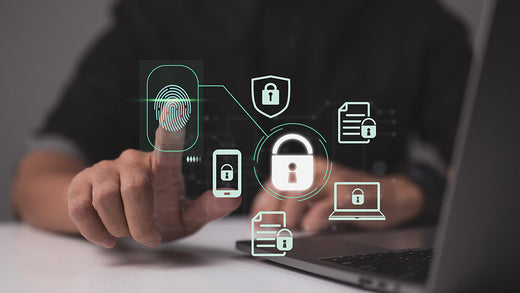
Passwordless Authentication Market and Its Impact on Modern Security Practices
Share

Introduction
In today’s rapidly evolving digital landscape, cybersecurity is more critical than ever. As traditional password-based systems become increasingly vulnerable to cyber threats and fail to meet the growing demand for seamless user experiences, a new wave of innovation is taking over. Enter passwordless authentication – a groundbreaking approach that eliminates the need for passwords altogether while enhancing security and improving user convenience. This shift in authentication methods marks a paradigm change, offering an advanced and more reliable way to verify identities across platforms. In this blog, we’ll explore the evolution, benefits, and long-term implications of passwordless authentication, and why it’s set to be a game-changer for the future of cybersecurity.
Biometric Authentication: Merging Security with Convenience
One of the most significant innovations in passwordless authentication is biometric authentication, which includes fingerprint scanning, facial recognition, iris scanning, and voice recognition. These methods offer an unparalleled combination of security and user convenience, making them increasingly popular across industries. With biometric data being unique to each individual, it provides a highly secure method of confirming identity that is much harder to compromise than traditional passwords. As consumer demand grows for more seamless, efficient, and secure experiences, biometric methods are poised to play a central role in the cybersecurity strategies of tomorrow.
For investors, the rapid adoption of biometric technology signals a promising market shift. Companies that incorporate biometric solutions into their products and services stand to offer their customers enhanced security while benefiting from an increasingly security-conscious environment.
Multi-Factor Authentication (MFA): A Layered Approach to Security
Although passwordless authentication is transforming the industry, Multi-Factor Authentication (MFA) remains an essential element in modern security protocols. MFA combines two or more independent authentication factors to verify user identity. By requiring something the user knows (like a PIN), something the user has (like a mobile device), or something the user is (such as a fingerprint), MFA significantly boosts security.
This layered approach is particularly effective in preventing unauthorized access, making it a powerful tool when combined with passwordless solutions. As cyberattacks grow more sophisticated, MFA, along with passwordless technology, forms a robust defense against phishing, credential stuffing, and other types of breaches. For cybersecurity investors, this combination of passwordless authentication and MFA provides a scalable, future-proof solution that aligns with increasing security standards across sectors.
FIDO2 and WebAuthn: Industry Standards Leading the Way
The FIDO Alliance's FIDO2 specifications and the Web Authentication (WebAuthn) standard are two key pillars in the passwordless authentication movement. These globally recognized standards enable secure, password-free login experiences across platforms and devices. FIDO2 allows users to authenticate without entering passwords, relying on public-key cryptography to prove identity. WebAuthn, a W3C standard, enhances FIDO2 by providing a browser-based API for easier integration into websites and apps.
The widespread adoption of these standards by major players like Google, Microsoft, and Apple highlights their growing importance in the cybersecurity ecosystem. For investors, this represents an opportunity to back solutions that align with these standards, offering scalable, interoperable products and services that meet the security demands of tomorrow.
Mobile Authentication: The Heart of Passwordless Security
Mobile devices are at the forefront of the passwordless authentication revolution. With their built-in biometric capabilities and secure elements like Trusted Execution Environments (TEE), smartphones and tablets are becoming key tools for identity verification. Mobile authentication offers a perfect balance of convenience and security, ensuring that users can easily access their accounts with minimal friction while knowing their personal data is protected.
From an investment standpoint, mobile authentication is a space ripe for growth. As mobile-first solutions continue to dominate the market, companies that develop and integrate passwordless authentication on mobile platforms are poised to see significant returns. Moreover, with mobile devices being such a critical part of daily life, investing in this area ensures relevance in a future where mobile-first security is the norm.
Zero Trust Security: Strengthening the Foundation of Passwordless Authentication
One of the most critical aspects of passwordless authentication is its alignment with Zero Trust Security principles. In a Zero Trust model, security is never assumed based on location or device. Instead, access is continuously verified using a combination of factors such as user identity, device health, and real-time risk assessments. Passwordless authentication fits perfectly into this framework, ensuring that access is granted only after thorough authentication and validation.
For investors, Zero Trust Security is more than just a trend—it represents a fundamental shift in how organizations approach cybersecurity. As businesses increasingly adopt Zero Trust principles, solutions that incorporate passwordless authentication will be in high demand. This shift presents tremendous opportunities for growth in companies that offer robust, adaptable cybersecurity solutions built on these principles.
Conclusion: A Passwordless Future for Cybersecurity
As the digital landscape continues to evolve, so too must the ways we secure it. Passwordless authentication is at the forefront of this change, offering a secure, user-friendly alternative to traditional password-based systems. Technologies such as biometric authentication, MFA, FIDO2 and WebAuthn standards, mobile authentication, and Zero Trust Security are all playing pivotal roles in the evolution of cybersecurity.
For investors, this shift represents a significant opportunity. The demand for stronger, more convenient security solutions is only going to grow, and companies that embrace passwordless authentication are poised to lead the way. By prioritizing both security and user experience, passwordless authentication technologies are shaping a future where passwords become obsolete, and seamless, robust identity verification is the new norm.
With these innovations paving the way for more secure and efficient digital experiences, the cybersecurity landscape is ready for a revolution. As an investor, positioning yourself in this space now means aligning with the future of digital security.